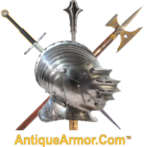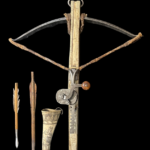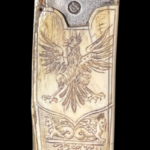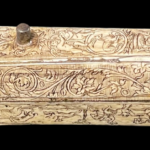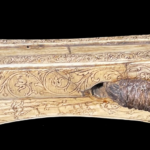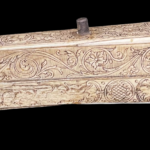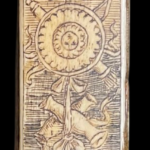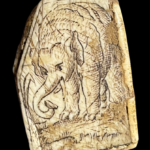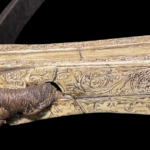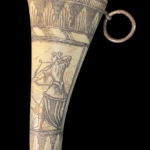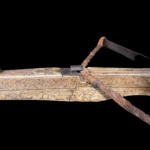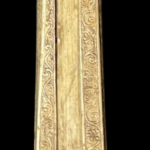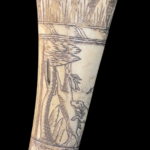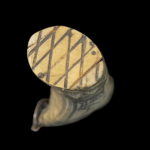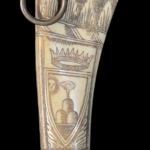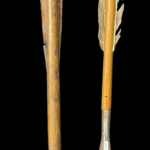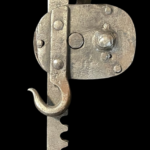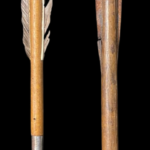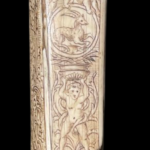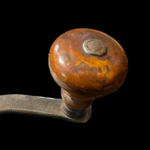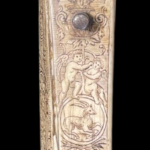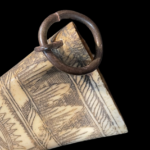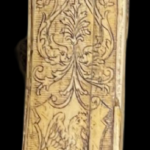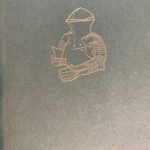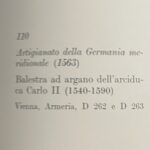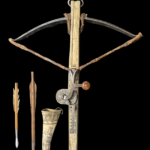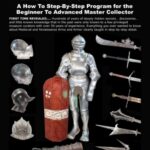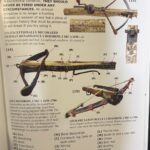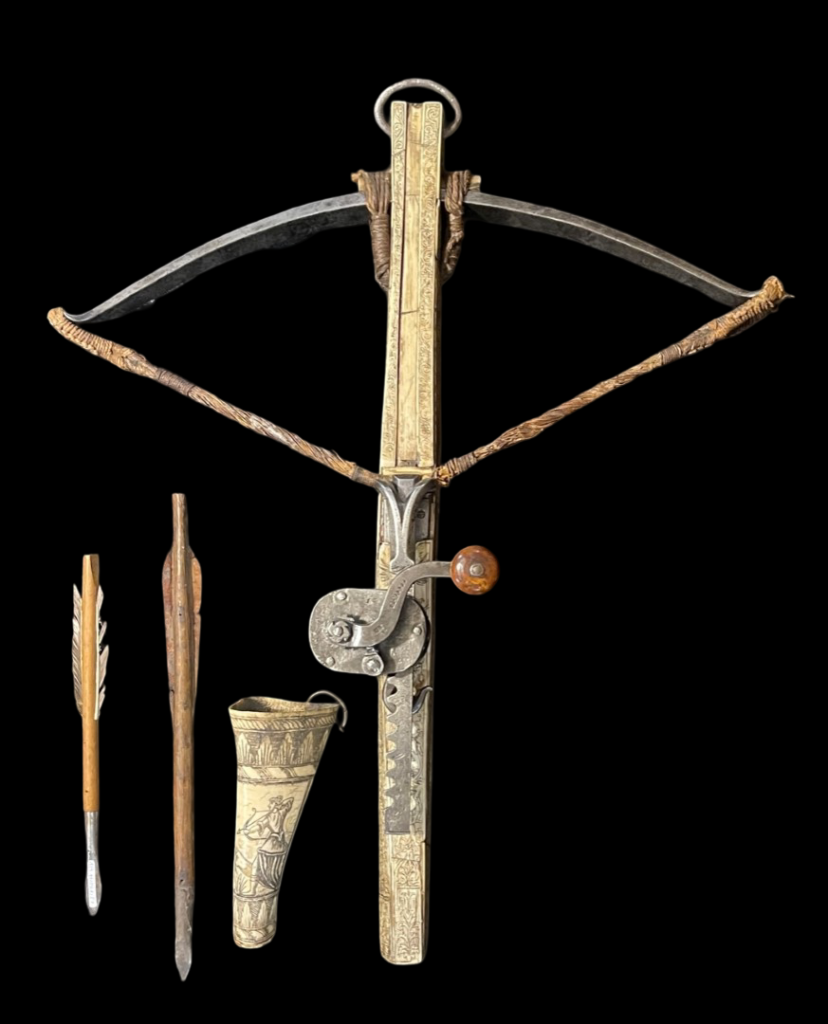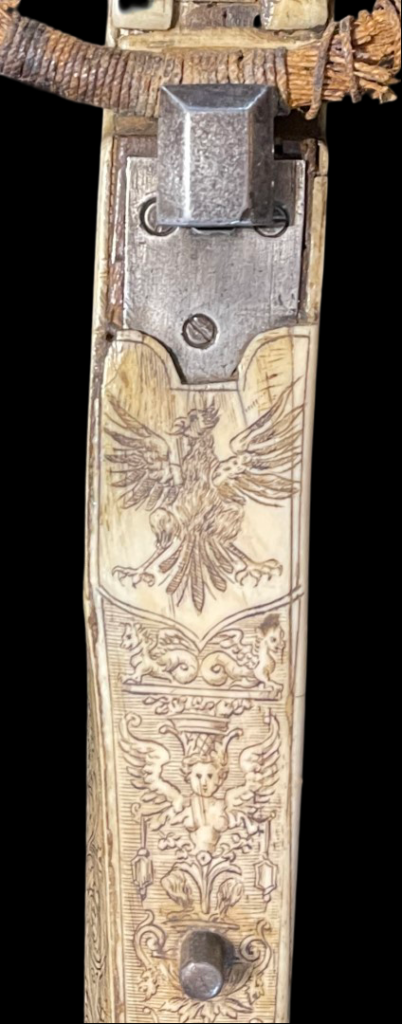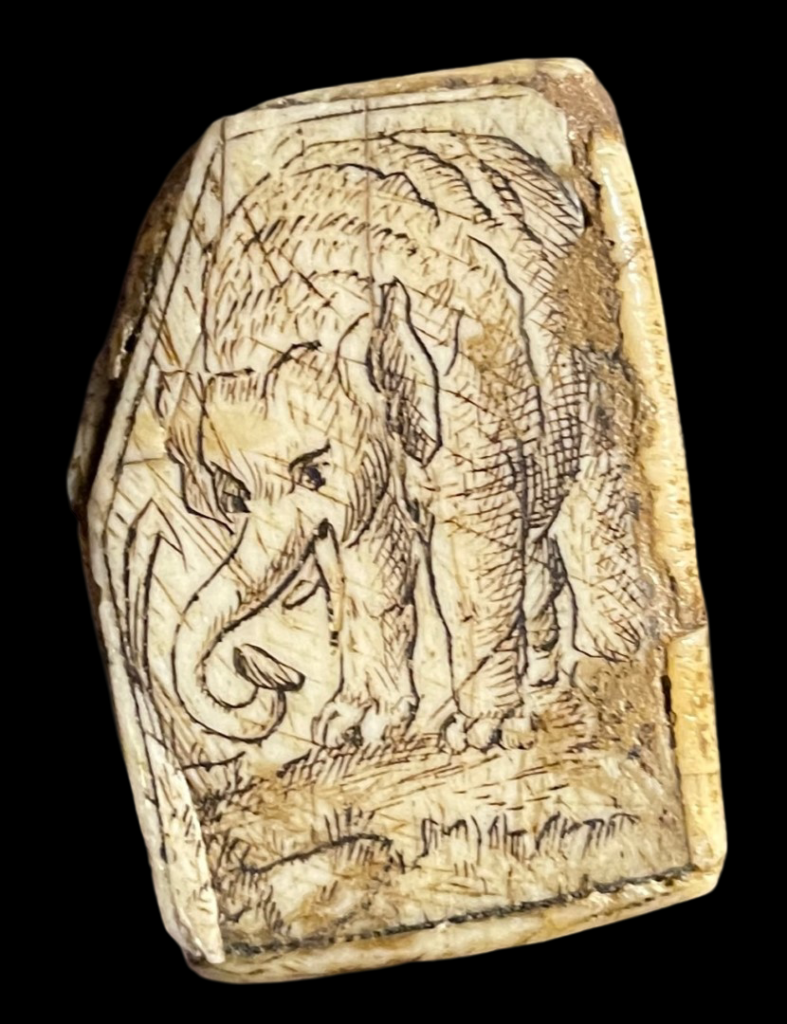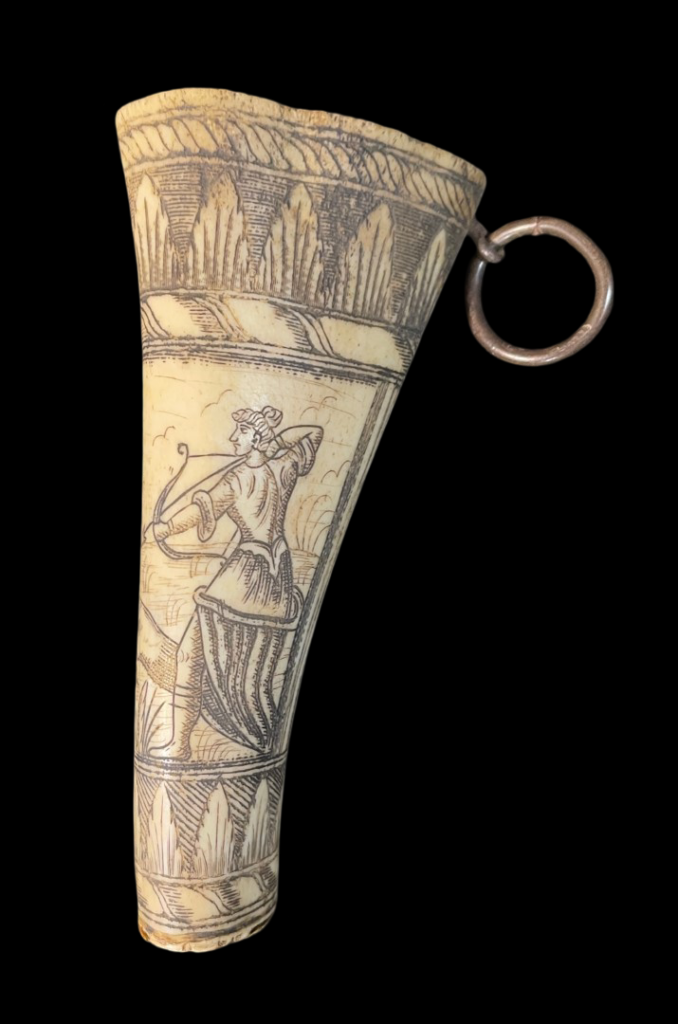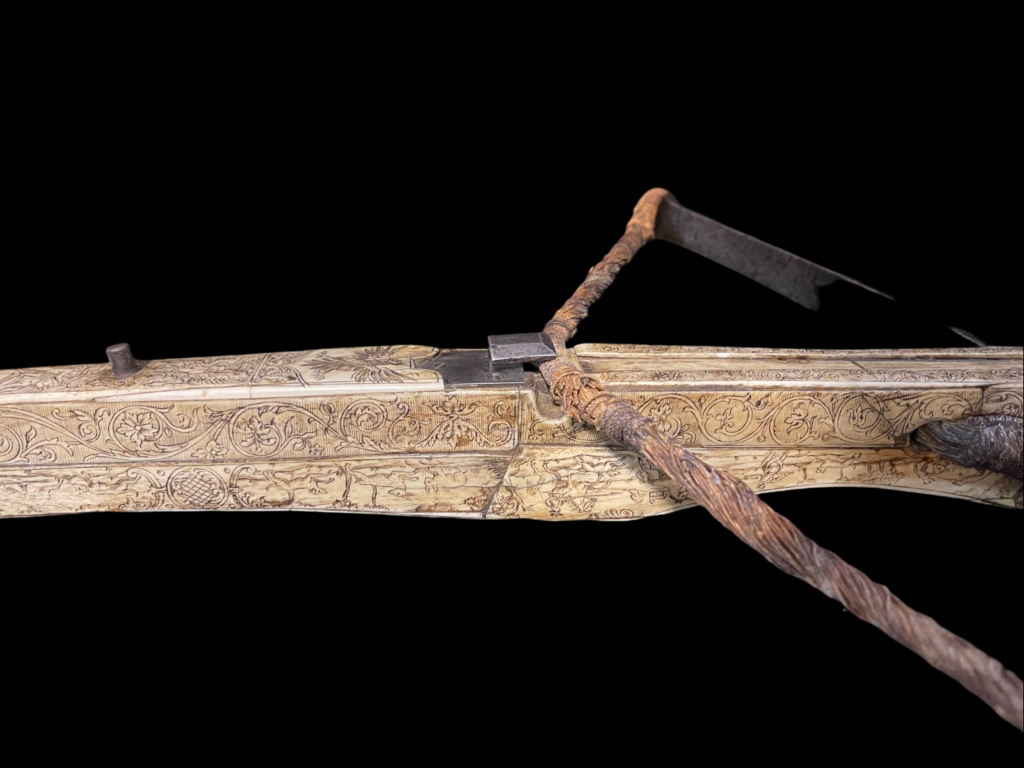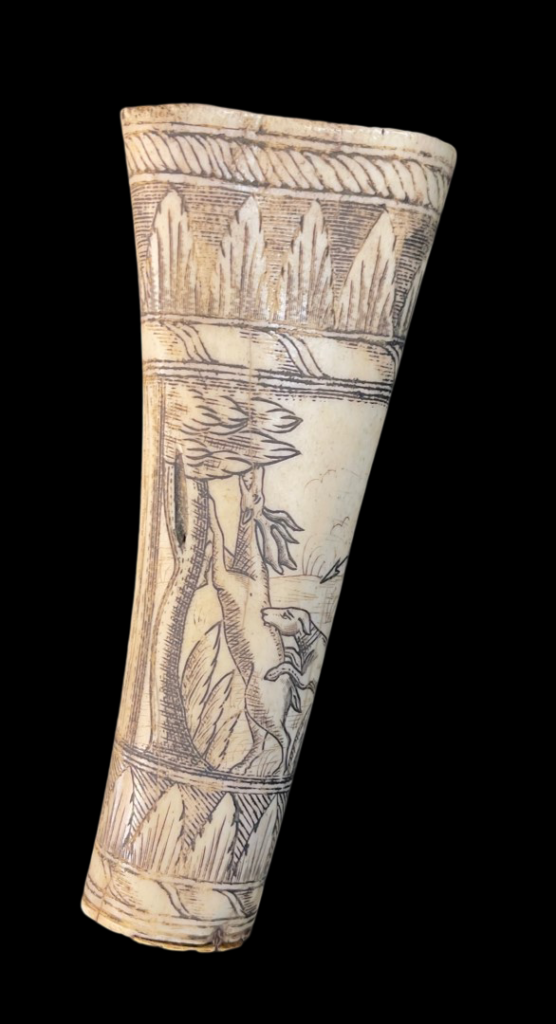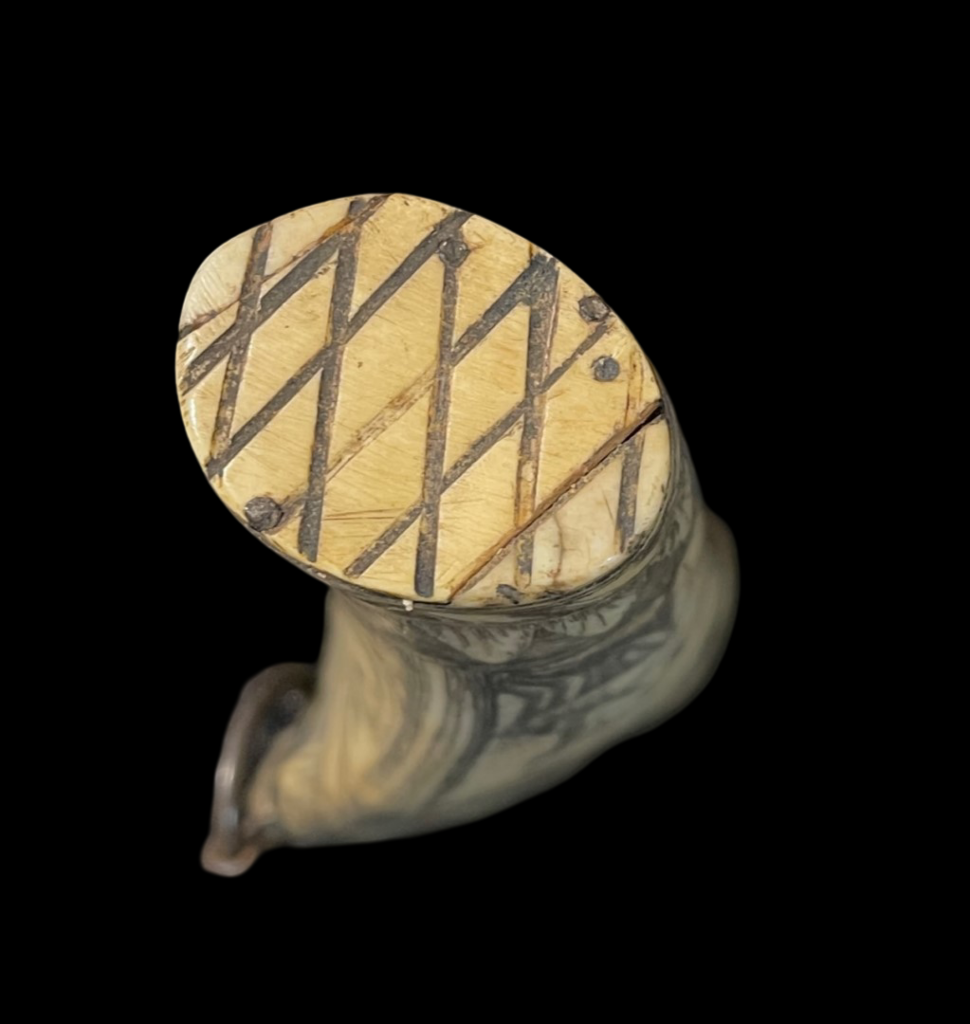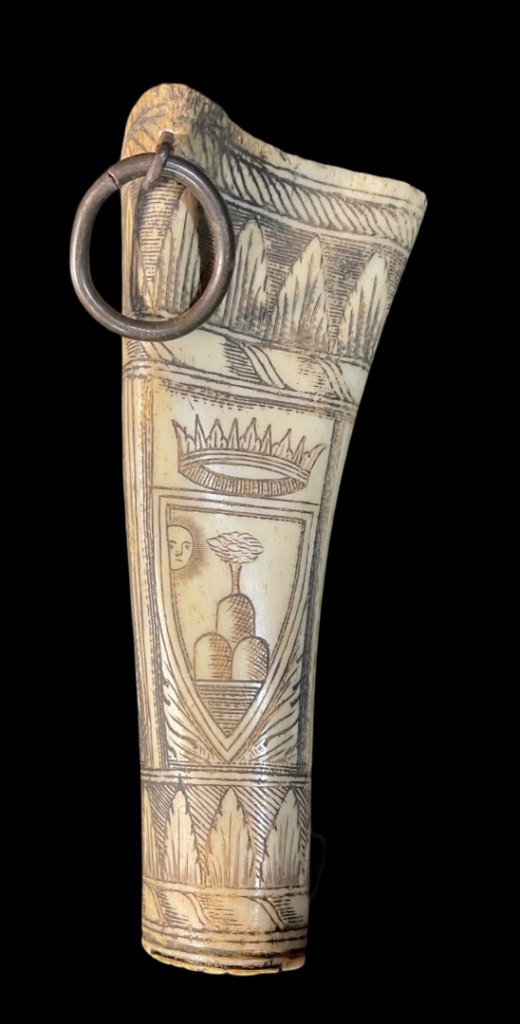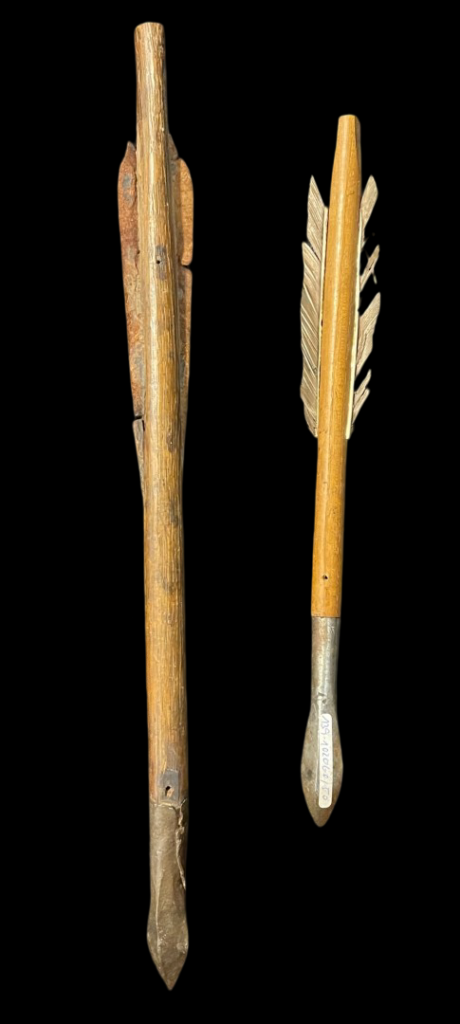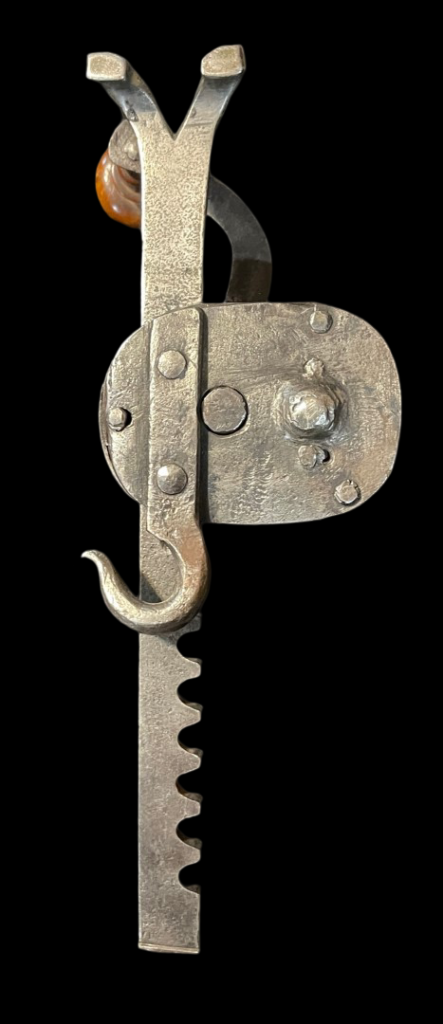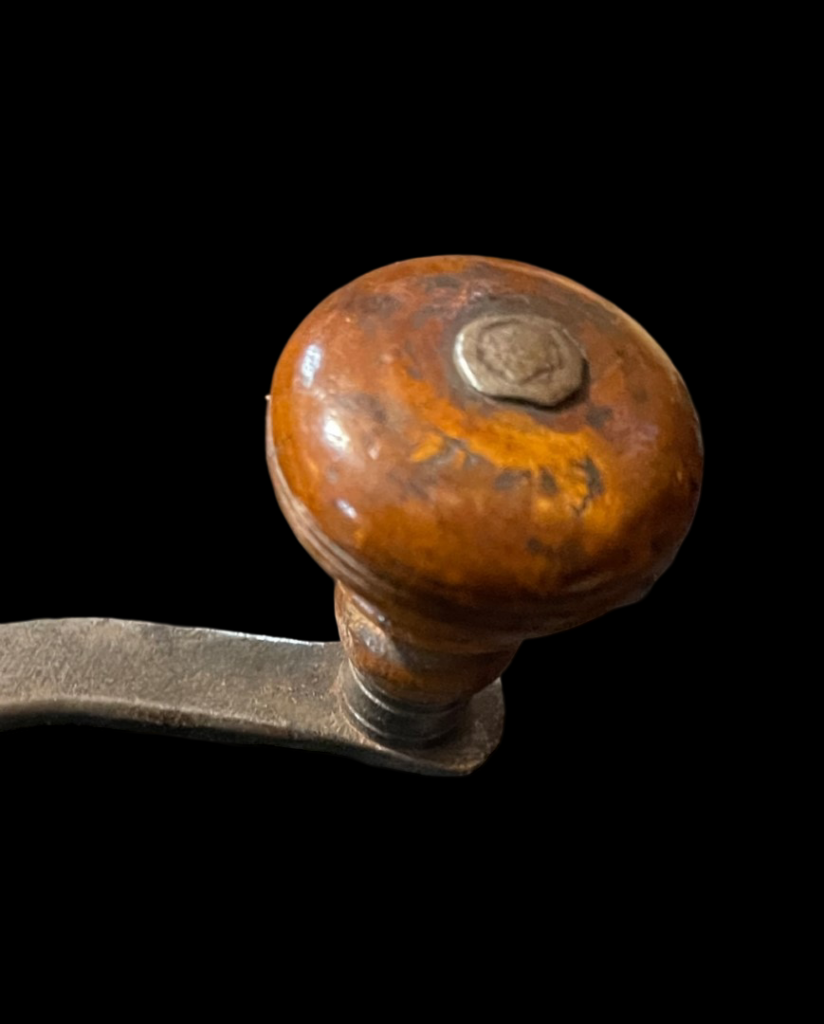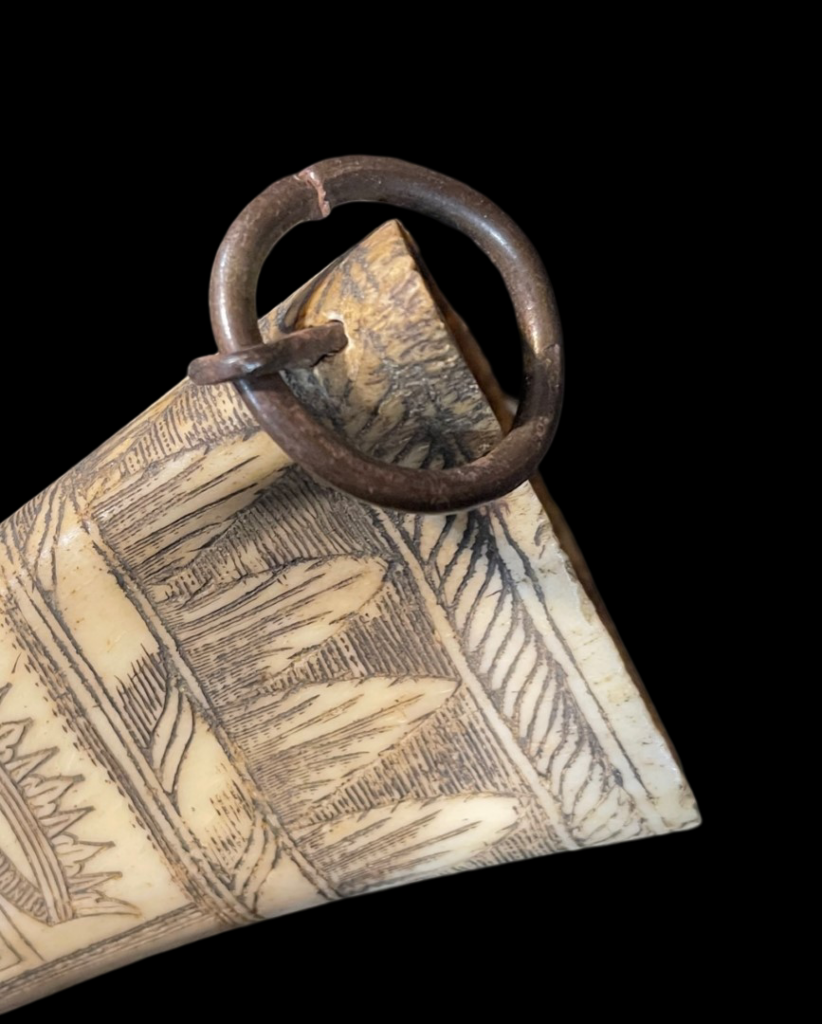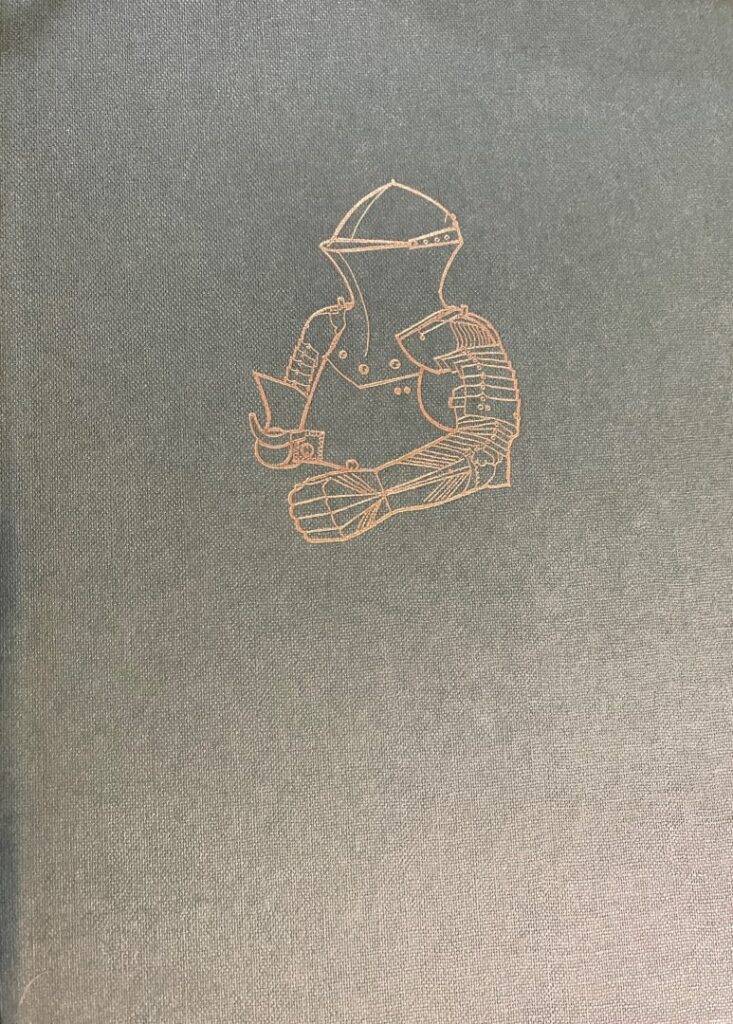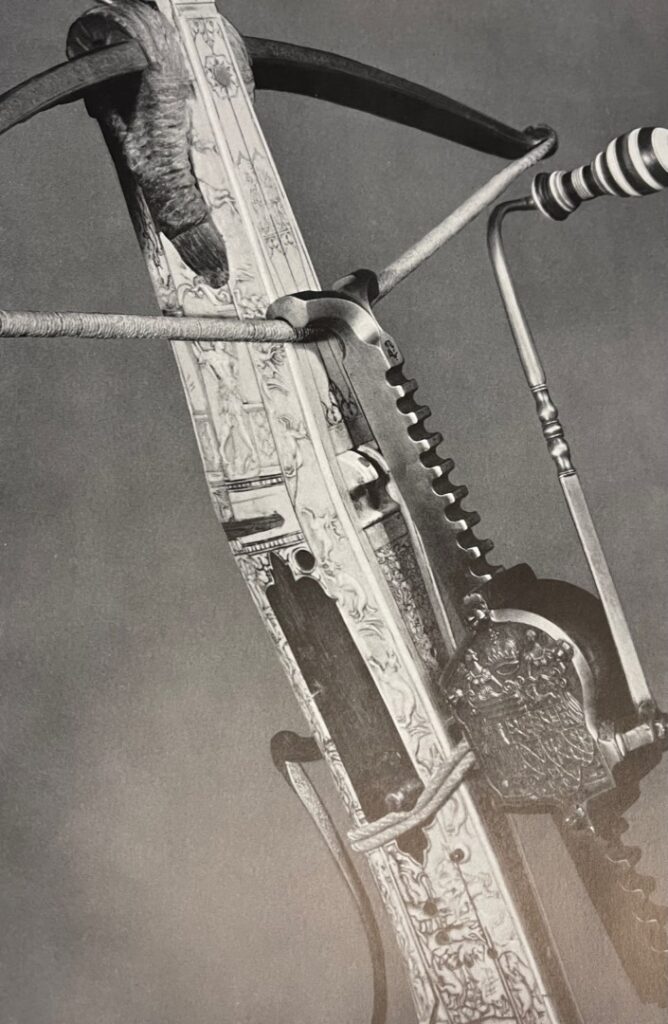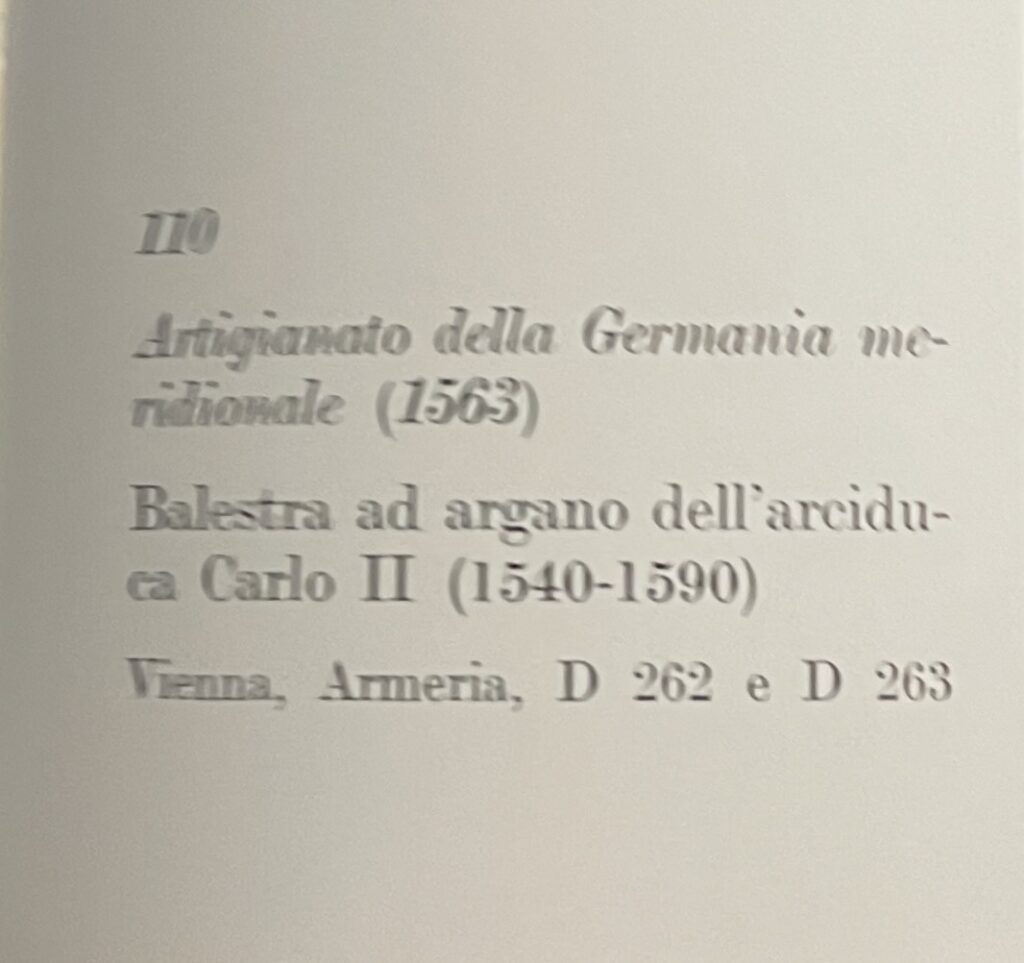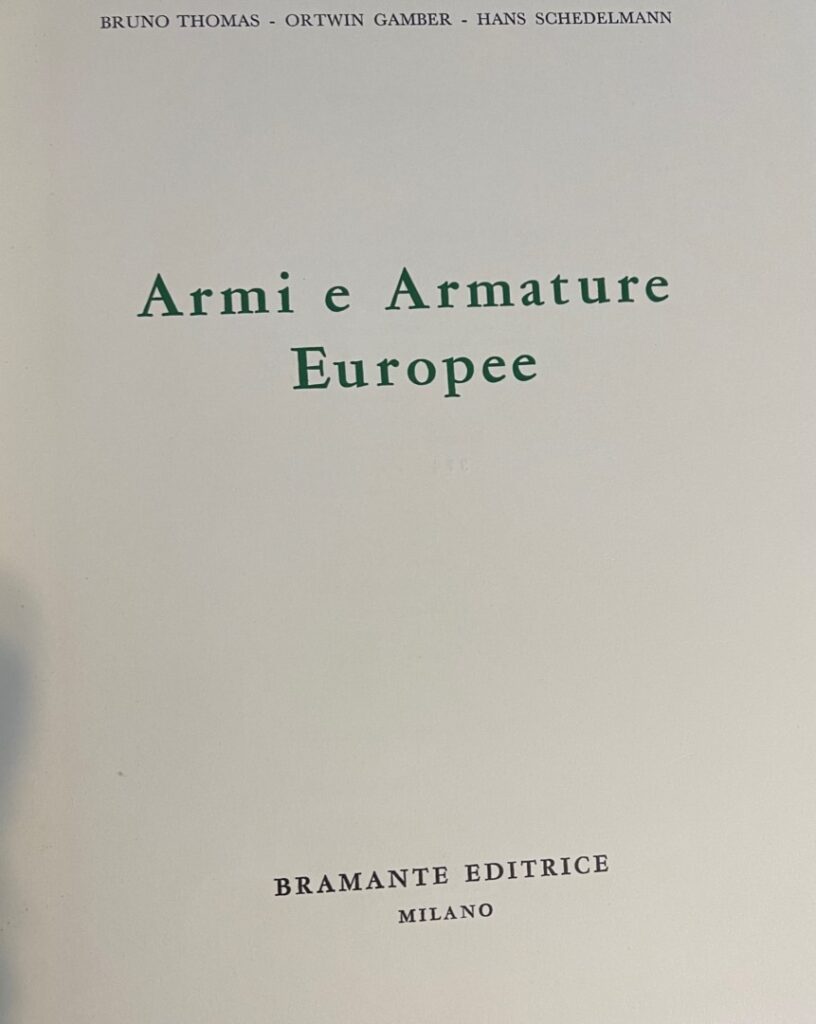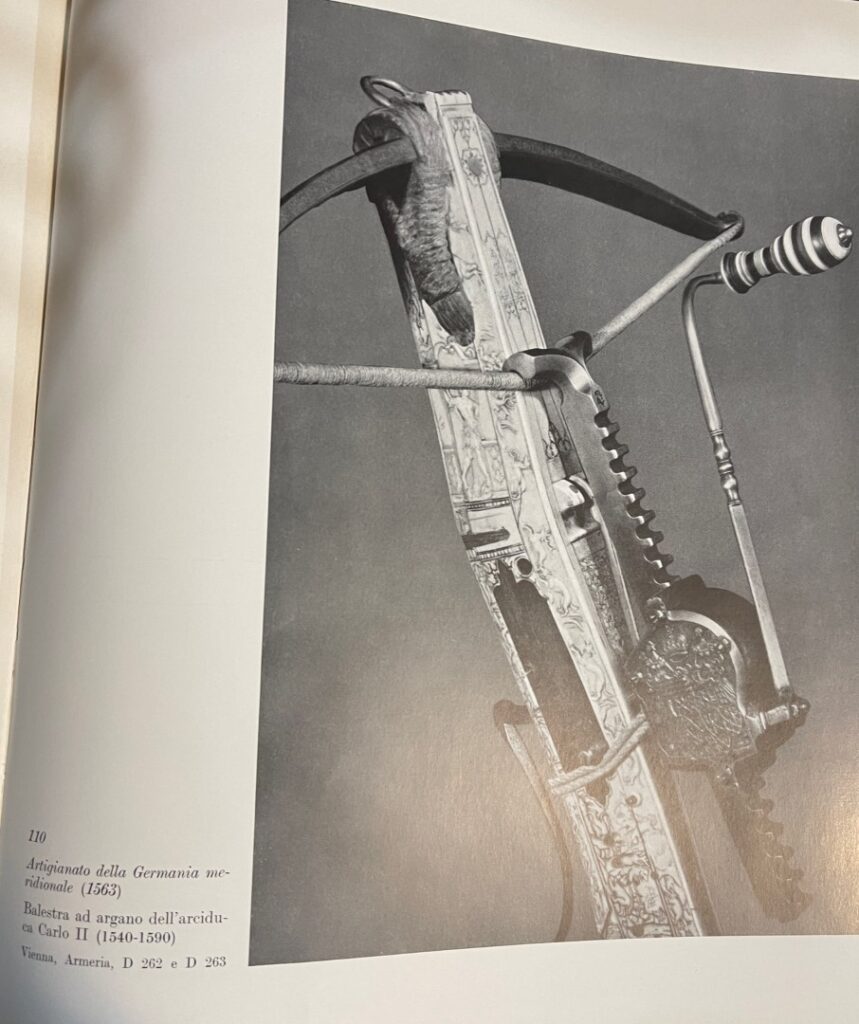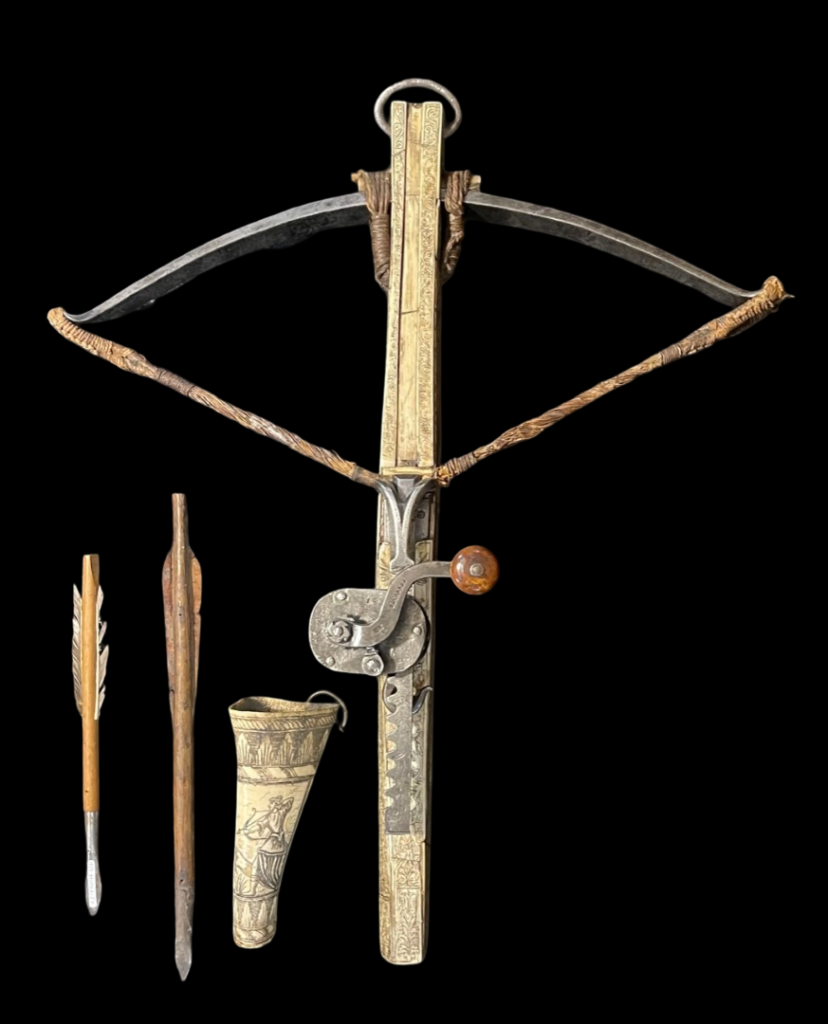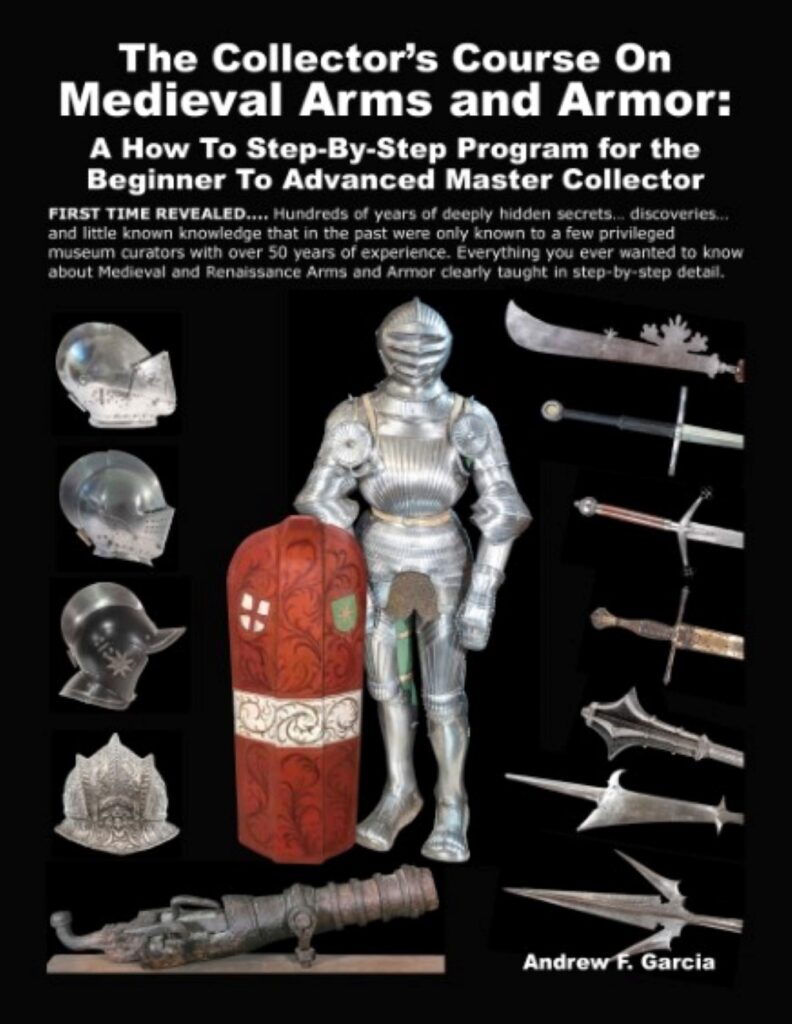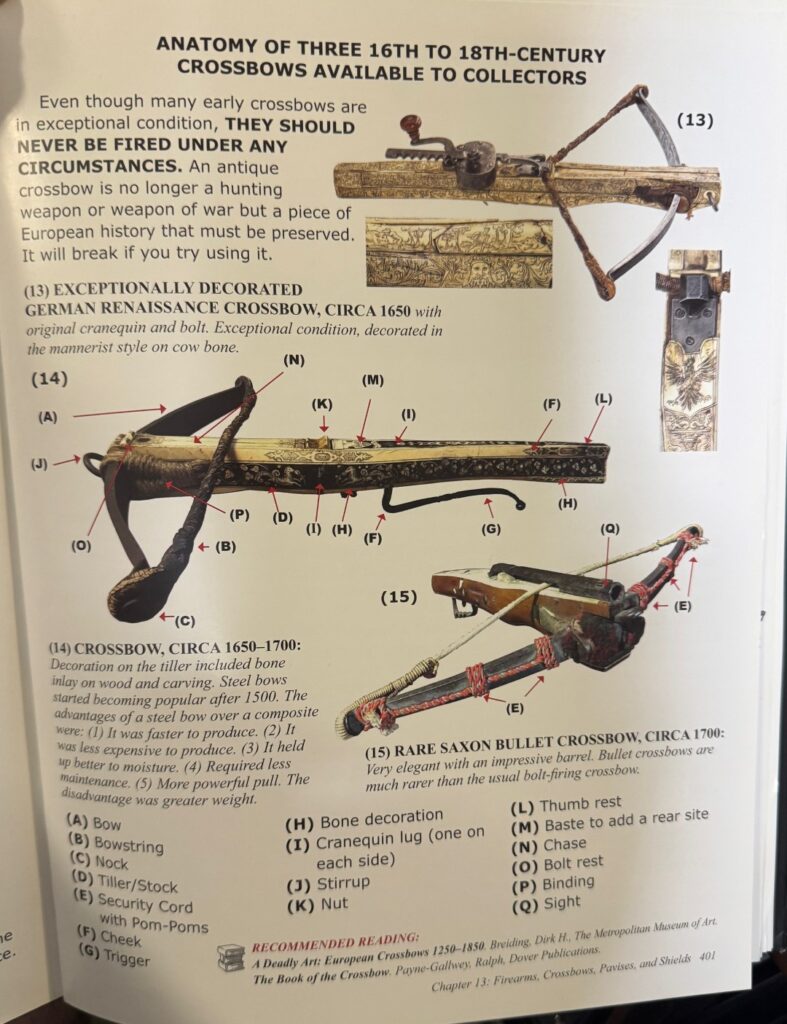1782) MUSEUM QUALITY HIGHLY DECORATED GERMAN RENAISSANCE CROSSBOW CIRCA 1560 WITH ORIGINAL CRANEQUIN WITH QUIVER AND BOLTS: The only crossbow with original cranequin I have had in 40 years! You probably will never be offered another one in your lifetime again.
Introduction: This highly decorated mint museum condition crossbow with original signed cranequin and associated quiver evokes the best of Renaissance mannerist decoration. A very similar crossbow, wrapped in cord with the same cow bone bow and locking design, can be found in a crossbow made in 1563 for Carlo II (1540-1590), pictured above.
Discussion: The crossbowman would hide behind a pavise (see page 405 in my book) while firing, moving from position to position, or spanning (reloading) his crossbow. Crossbowmen were used against both cavalry and infantry. They served as sharpshooters with a high degree of effectiveness. In Central Europe, they were deployed in carts and set up as a mini fortress by forming a perfect circle and shooting outward.
The crossbow has served mankind for almost 2,500 years. It originated in China and soon made its way to medieval Europe via trade or parallel development. The crossbow was used for warfare and hunting and was only surpassed by the firearm.
From the 12th to the 15th century, crossbows were a prized weapon of war. Armories throughout Europe had a multitude of them for defense. Many individual citizen soldiers who were required to participate in the defense of their town or city armed themselves with this state-of-the-art weapon, which required very little formal training. Crossbows also presented a big problem to the armored knight. A well-placed bolt shot by the most inexperienced crossbowman could penetrate armor. The crossbow’s effectiveness did not go unnoticed. The second Lateran Council under Pope Innocent II (d.1143) issued a canon (decree) which has been arguably interpreted to infer that the church had outlawed the use of the crossbow among Christians. It could only be used on non-Christians. This also included the bow-and-arrow archer to a certain degree.
The advantages the crossbow had over the bow and arrow are several:
– The crossbow did not require years to attain a high level of expertise.
– The crossbow bolt was also a more powerful projectile.
– Even though the crossbow did not require great strength since the crossbow was spanned with a cranequin, which is like a car jack (used to raise and exchange a car tire) and requires very little strength.
– Better aim can be taken with a crossbow, especially if rested on something like a castle wall.
– Crossbows can be fired much easier on horseback.
– The bow and arrow required more room to operate.
-Many variants of large crossbows for siege warfare, both offense and defense, would be impossible to employ with bow and arrow technology because of the massive spanning required.
Eventually, as firearm development progressed in the late 16th-century, it created the death of the crossbow and bow. The military last used the crossbow and bow during naval warfare in the 17th-century.
The crossbow’s silent discharge and many of the advantages mentioned above made the crossbow better for hunting than a firearm. The silence permitted hunting without scaring away animals, and the lack of a smell from flashing gunpowder meant the hunter’s position was not given away. Crossbows for the hunt were much more elaborate and expensive; only the wealthy typically went on a hunt. Just as topics and negotiations are discussed on the golf course today, the hunt in the Medieval and Renaissance periods played the same role. It was also a time to show off one’s wealth and socialize among the rich.
The wealthy hunted bear, boar, and deer in what was referred to as the “high hunt.” Lesser animals, such as birds and rabbits, were hunted by the poor. The hunt for the wealthy and noble was an elaborate affair planned with military precision and included many servants. Among the multitude of servants were beaters who made noise using implements to scare animals in the direction of the hunters. The hunters would be camouflaged in natural terrain, camouflaged carts, artificial hedges, atop trees, or any combination as the animals were driven to them. Hunting was also done on horseback.
Publication: The Collectors Course On Medieval Arms and Armor ,2021, Garcia, page 401.
Conclusion: An exceptionally elegant crossbow in superb condition. The only crossbow with original cranequin I have had in 40 years! You probably will never be offered another one in your lifetime again. This piece of European history is priced to sell to the most discriminating collector or museum today. ACT-KNOW!!!*.
Contact Me To Get The Latest Lowest Price Possible From The Owner*
